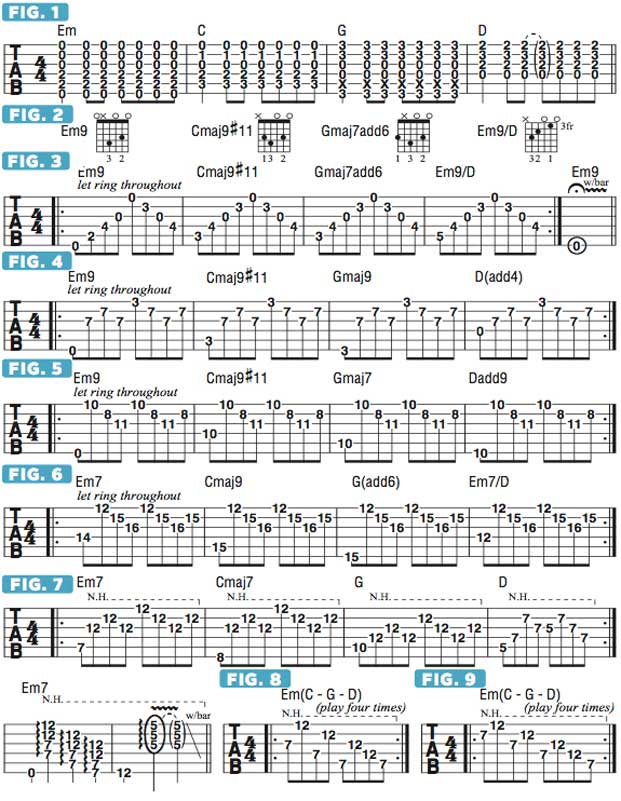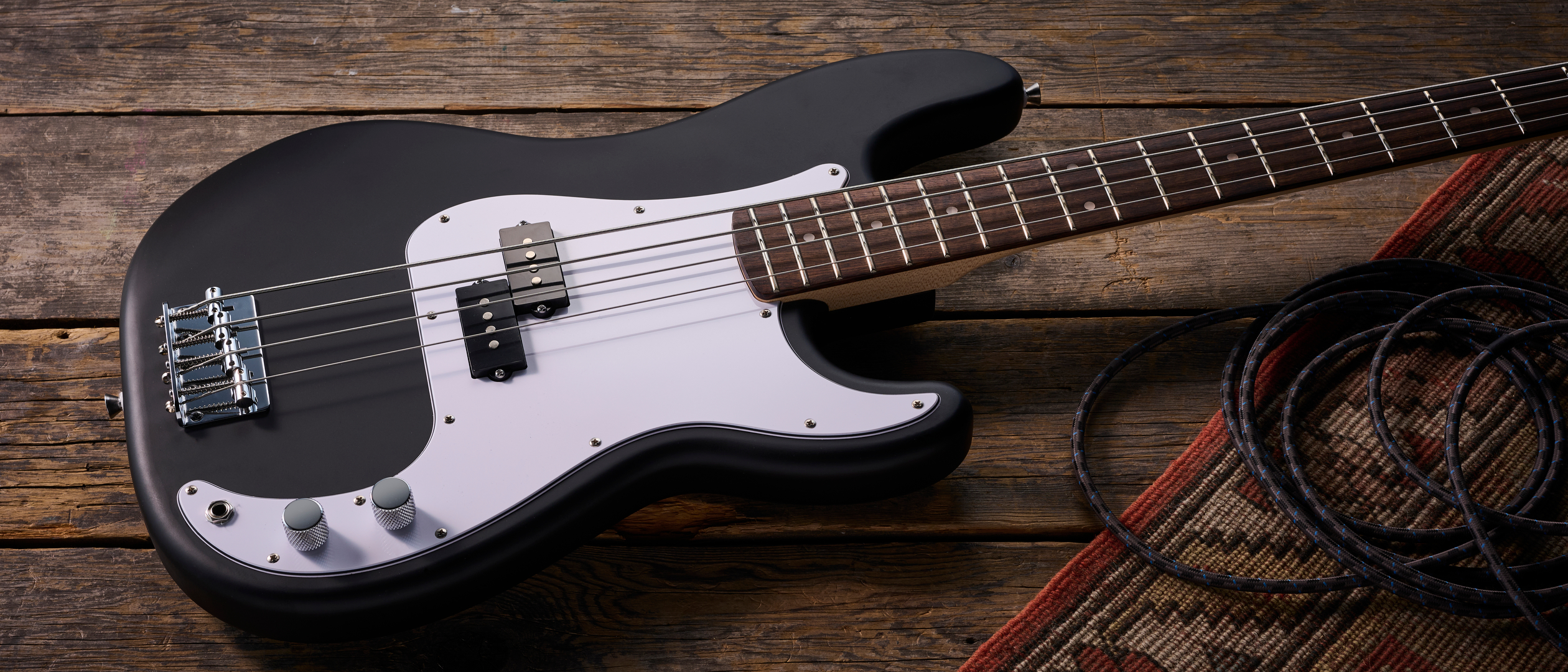Enhancing a Basic Progression with Unusual Arpeggios
Learn how to craft a lead that will fortify and enhance the primary rhythm part without overshadowing it.

There have been countless times over the years where I have been called upon in a recording session to lay down a complimentary electric guitar part behind a very straightforward acoustic part that’s built from very basic open chords.
To me, my role in this situation is to work with the chord progression and try to craft an interesting part that will fortify and enhance the primary rhythm part without overshadowing it. Let’s say you have a song based on a simple four-chord progression, such as Em-C-G-D (see FIGURE 1).
A great approach for forging a complimentary part is to bring another chord tone into the picture and include that same note in each of the chords, thus creating a musically “unified” part. For example, I can add an Fs note to the Em, C and G chords to create a richer sound.
Fs is also part of a D triad (D F# A), so it is a “welcome” pitch when played alongside a D major chord. FIGURE 2 illustrates these new voicings, each of which includes F#, resulting in a progression of Em9-Cmaj7#11-Gmaj7add6-Em9/D. Notice that, with each of these voicings, the notes on the top four strings are identical while the lower bass notes change. We can now create a more intricate, interesting complimentary part by arpeggiating each chord—sounding the notes individually and in succession.
In FIGURE 3, I execute a steady progression of eighth notes, sounding four ascending notes across beats one and two of each bar and then descending across beats three and four. This pattern may be picked in a variety of ways, but I prefer to use all downstrokes for the ascending notes and alternate (down-up) picking for the descending notes.
Now let’s apply this approach to some other chord voicings that will work over our basic progression. In FIGURE 4, I’ve created a somewhat unusual voicing on the top three strings built from the notes D, F# and G. These notes are arpeggiated identically in each bar while the first note—the root note of the chord—changes relative to the Em-C-G-D progression.
It’s fun to get creative with this approach and try using it with uncommon chord voicings. FIGURES 5 and 6 illustrate ringing arpeggios played high up on the fretboard with more challenging fingering shapes.
FIGURE 7 brings some ringing natural harmonics (N.H.) into the mix. I play the first three bars by lightly laying my pinkie across the top four strings directly above the 12th fret, which will sound natural harmonics on each of these strings when picked while I begin each bar with a fretted bass note that is also held. In bar 4, I change the picking pattern and positions of some of the natural harmonics. We can also use natural harmonics only and play a repeating pattern that sounds cool over each chord in the progression, as demonstrated in FIGURE 8).
Try using these same approaches to create your own cool complimentary guitar parts.

Get The Pick Newsletter
All the latest guitar news, interviews, lessons, reviews, deals and more, direct to your inbox!
She wowed Sonny Landreth and Carlos Santana called her the “future” – Erja Lyytinen shares her 6 go-to slide licks for unlocking more expressive soloing
“He combined the passion of Gary Moore with riffs inspired by Zeppelin and Deep Purple, plus unexpected melodic twists like Ritchie Blackmore”: He was one of ’80s rock’s great journeymen – and his searing hot lead work inspired Marty Friedman










